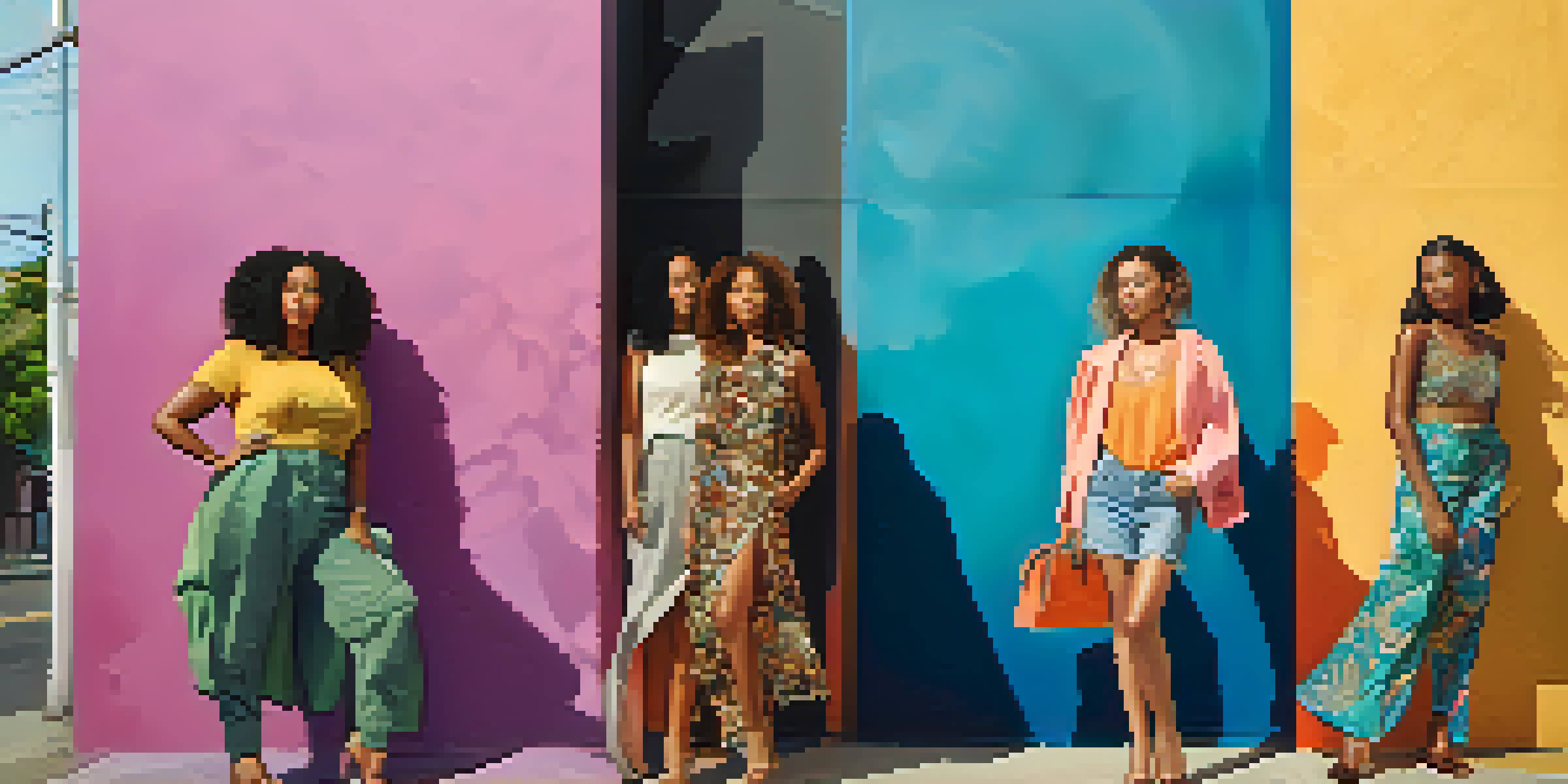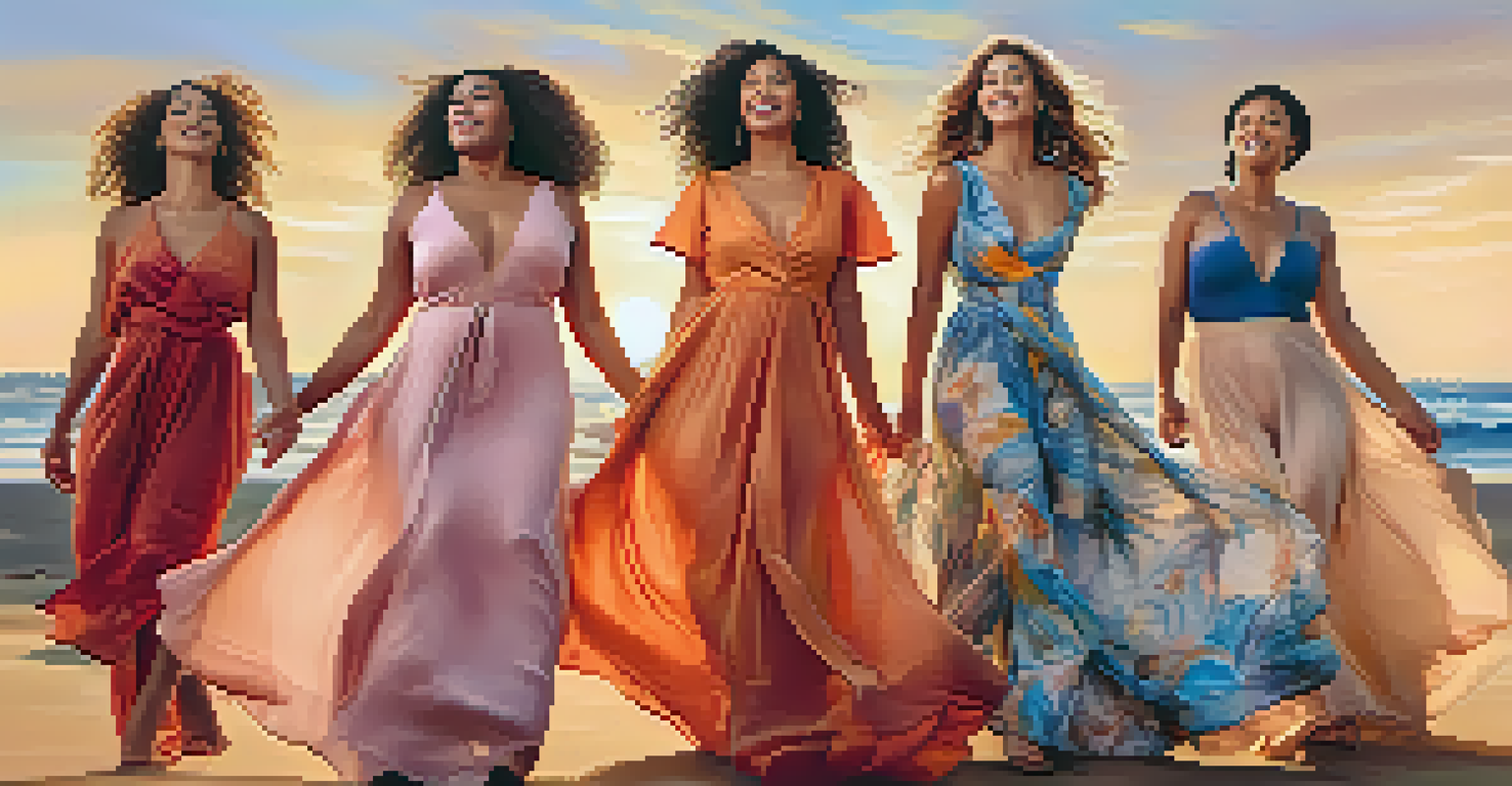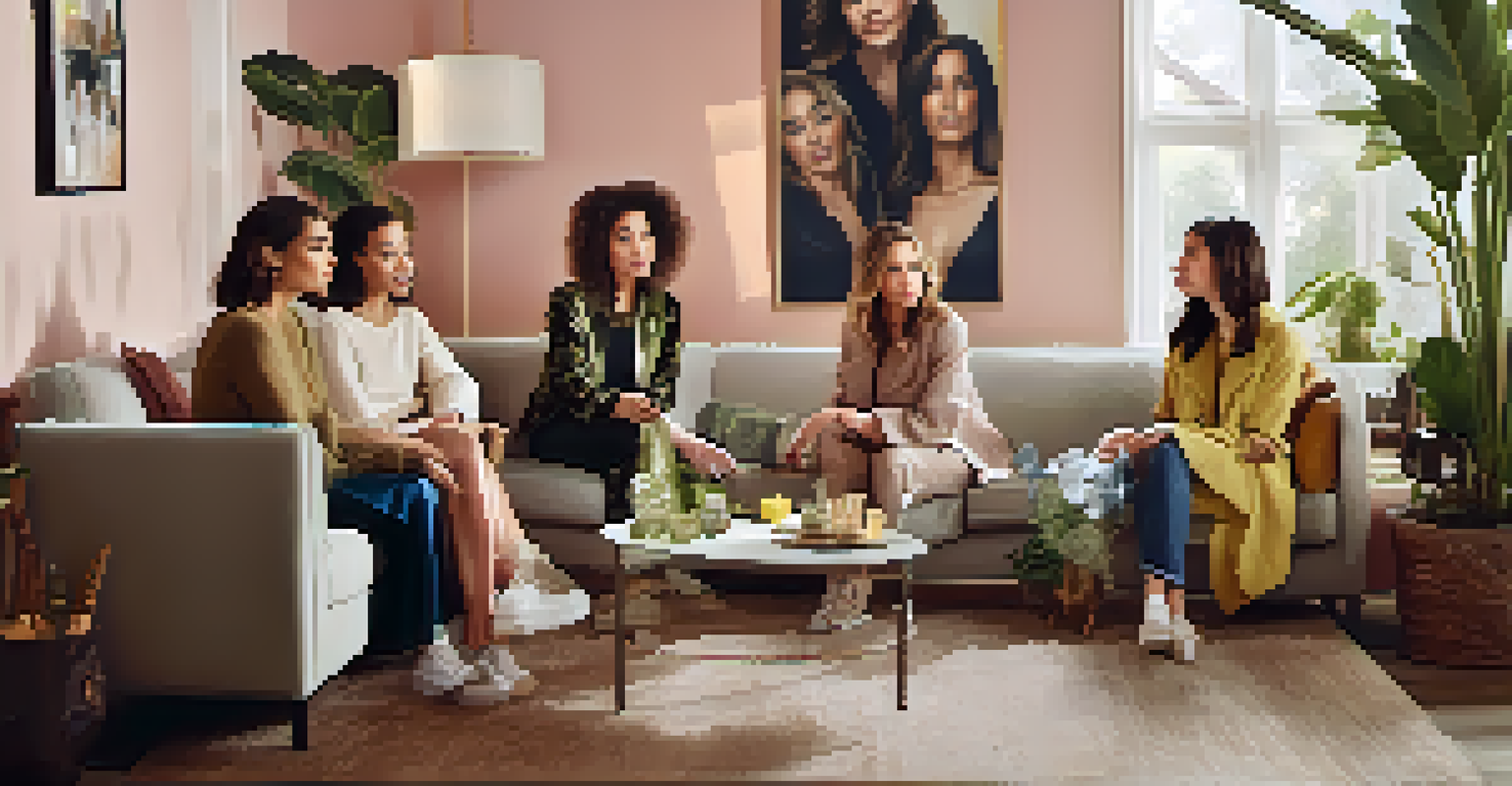Fashion Advertising and the Male Gaze: A Critical Approach

Understanding the Male Gaze in Fashion Advertising
The term 'male gaze' originated from feminist theory, describing the way visual arts and literature depict the world from a masculine perspective. In fashion advertising, this often translates to showcasing women primarily for male viewers, focusing on their physical appearance rather than their individuality. Such depictions can reinforce societal norms and stereotypes, shaping how both men and women perceive beauty and desirability.
The male gaze projects a phantasm of the female body, as perceived through male eyes, and thus defines our culture's understanding of desire and beauty.
When ads prioritize the male perspective, they often reduce women to mere objects, which can be damaging. For instance, a campaign featuring a woman in a compromising position may sell clothing, but it also sends a message about women's roles in society. This troubling dynamic can influence how young girls and boys view gender roles, often leading to unhealthy standards of beauty and behavior.
Addressing the male gaze in fashion advertising is crucial for creating a more inclusive narrative. By recognizing this perspective, brands can take steps to shift the focus from objectification to empowerment, celebrating diversity and individuality. This not only fosters a healthier image for consumers but also reflects a more progressive understanding of gender equality.
The History of the Male Gaze in Fashion
Historically, fashion advertising has deep roots in the male gaze, dating back to the early 20th century. Advertisements often featured glamorous women posing in alluring ways, designed to attract male attention. During this era, the portrayal of women was more about fantasy than reality, often depicting an unattainable standard of beauty that persists today.

As time progressed, the male gaze became more entrenched in societal norms, influencing everything from magazine covers to runway shows. The depiction of women in advertising often aligned with male fantasies, showcasing them as objects of desire rather than individuals with their own stories. This trend has been perpetuated by the fashion industry, which frequently prioritizes aesthetics over authenticity.
Male Gaze Shapes Fashion Advertising
The male gaze often reduces women to objects of desire in fashion advertising, reinforcing harmful societal norms and stereotypes.
However, the tide has begun to turn in recent years, with a growing awareness of the need for change. Brands are starting to distance themselves from the male gaze, recognizing the importance of representing women as multifaceted individuals. This shift not only reflects a broader cultural change but also resonates with consumers who seek authenticity and empowerment in the brands they support.
Impact of the Male Gaze on Women’s Self-Image
The prevalence of the male gaze in fashion advertising has significant implications for women's self-image. Constant exposure to idealized images can lead to feelings of inadequacy, as many women struggle to measure up to these standards. This disconnect can result in detrimental mental health issues, including anxiety and body dysmorphia.
Beauty is not in the face; beauty is a light in the heart.
Moreover, the male gaze often dictates what is considered beautiful or desirable, which can marginalize those who do not fit these narrow definitions. Women of diverse backgrounds, body types, and ages may feel excluded from the narrative, leading to a lack of representation in media and advertising. This can perpetuate harmful stereotypes and limit the scope of beauty in society.
Recognizing the impact of the male gaze is essential for fostering a positive self-image among women. Brands can play a pivotal role in this shift by showcasing a wider range of body types, ethnicities, and styles. By doing so, they not only promote inclusivity but also help women embrace their unique identities, ultimately challenging societal beauty standards.
Challenging the Male Gaze Through Representation
Challenging the male gaze in fashion advertising requires a concerted effort towards better representation. Brands that prioritize diversity in their campaigns can shift the narrative, showcasing women of various backgrounds, sizes, and abilities. This not only broadens the definition of beauty but also allows more consumers to see themselves reflected in advertising.
An excellent example of this shift can be seen in brands like Aerie, which promotes body positivity by featuring unretouched images of real women. This approach not only challenges traditional beauty norms but also empowers women to embrace their bodies as they are. Such campaigns resonate with audiences, creating a sense of community and acceptance.
Impact on Women's Self-Image
Constant exposure to idealized images from the male gaze can lead to negative self-image and mental health issues among women.
Additionally, engaging male audiences in these conversations can foster a more inclusive environment. By promoting awareness of the male gaze and its effects, brands can encourage men to appreciate women beyond their appearance. This dialogue can lead to a more balanced and respectful representation in fashion advertising.
The Role of Social Media in Shaping Perspectives
Social media has revolutionized the way fashion advertising reaches consumers, providing a platform for diverse voices and perspectives. Unlike traditional media, social platforms allow users to challenge the male gaze openly, sharing their experiences and advocating for change. This democratization of content has led to a more inclusive conversation around beauty and representation.
Brands are increasingly aware of the power of social media and how it can influence public perception. Many have begun to collaborate with influencers and activists who promote body positivity and diversity, further amplifying these messages. This shift has made it easier for consumers to connect with brands that prioritize authenticity over objectification.
However, while social media has the potential to challenge the male gaze, it can also perpetuate the same issues. The pressure to conform to idealized standards can be exacerbated online, leading to a cycle of comparison and self-doubt. Therefore, it's crucial for both brands and consumers to navigate these platforms mindfully, promoting positive representation and encouraging dialogue around body image.
The Future of Fashion Advertising Beyond the Male Gaze
As society continues to evolve, the future of fashion advertising appears to be moving away from the male gaze. Brands that embrace this change are likely to resonate more with consumers who value authenticity and inclusivity. This shift not only reflects changing societal norms but also offers a fresh perspective on beauty that celebrates individuality.
Emerging technologies, such as augmented reality and virtual fashion shows, present new opportunities for brands to engage with consumers in innovative ways. These platforms can allow for more personalized experiences, showcasing a wider range of styles and body types. As a result, fashion advertising can become a space that promotes creativity and self-expression rather than conformity.
Future Embraces Diversity and Inclusivity
The future of fashion advertising is shifting towards authenticity and inclusivity, encouraging brands to represent diverse women and their unique stories.
Ultimately, the future of fashion advertising lies in collaboration and understanding. By working together, brands, consumers, and advocates can create a narrative that uplifts all voices. This collective effort can redefine beauty standards and foster a more equitable and inclusive fashion industry.
Conclusion: Redefining Beauty Standards Together
In conclusion, the male gaze has long shaped fashion advertising, often to the detriment of women's self-image and representation. However, as awareness grows, both brands and consumers have the power to challenge this narrative. By prioritizing diversity and authenticity, the fashion industry can begin to shift its focus from objectification to empowerment.
We are at a pivotal moment where conversations about beauty and representation are more important than ever. By engaging in these discussions, we can collectively redefine what beauty means in our society. This broader understanding can lead to healthier self-images and a more inclusive representation in fashion advertising.

Ultimately, the path forward requires collaboration and a commitment to change. By working together to address the impacts of the male gaze, we can create a fashion landscape that celebrates all individuals and fosters a sense of belonging. Together, we can pave the way for a future where beauty is defined by diversity and authenticity.